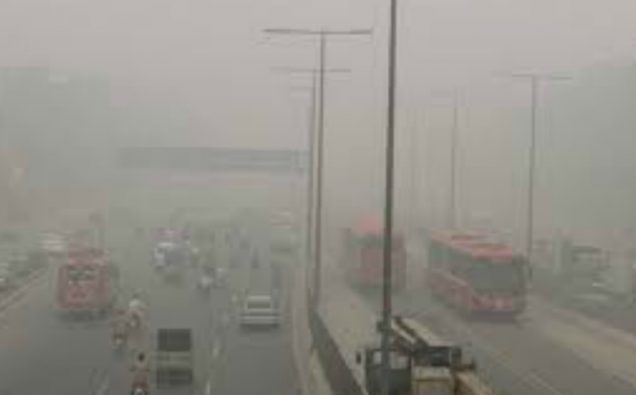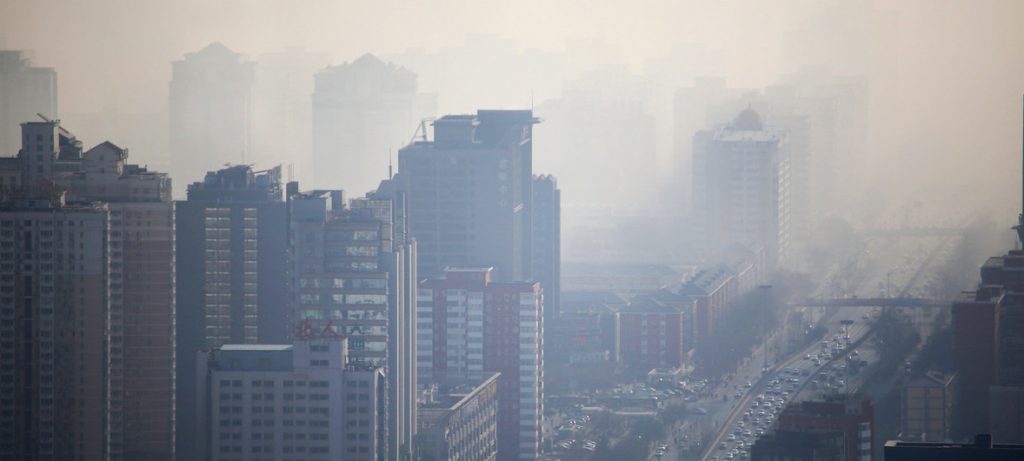
Taking 135,000 lives every year, air pollution has moved to the top of Pakistan’s economic and national health challenges.
Pakistan’s economy is facing economic burden to the tune of US$ 47.8 billion every year due to deteriorating environmental conditions, new assessments reveal.
According to a study of World Bank, the South Asian country is ranked 176th out of 180 countries on the Environmental Performance Index (EPI) for bad air quality. Lahore and Karachi are considered worse than the air of Beijing for particulate matter (PM 2.5) pollution. Major causes of air pollution include vehicular emissions, industrial emissions and burning of waste and stubble burning on both sides of India-Pakistan border.
Smog and other manifestations of air pollution have also resulted in reducing the life expectancy in Pakistan by 60 months (5years), the report claims.
In Punjab – the largest and most populous province – smog is now a public health emergency, with its capital Lahore’s air pollution exceeding safe limits by 9x.
Pakistan has an inadequate healthcare system. The problems compound as more than 80% people do not have access to clean drinking water or proper healthcare. Even the emergence of private healthcare and charitable services are not enough to cope with demands of the large population, although they are addressing disconnects in providing healthcare to the poor.
The overall challenge of climate change and global warming – due to human activity – can hardly be overlooked as its implications range from severe droughts to flash flooding and rise in summer temperatures.
Smog had never been a big issue until just four years ago in Pakistan, which is not alone in suffering from the pollution phenomenon. New Delhi and Beijing have also notoriously high levels of smog in winters.
So, what went wrong in the case of Pakistan?
It was the first week of November in 2016, when the eastern city of Pakistan experienced the smog phenomenon that had been a new normal in New Delhi, the Indian capital for years.
Generally, it is believed that the toxic gases produced due to burning of paddy crop stubble in neighboring India, is the major cause of smog in Lahore and adjoining districts.
But, according to environmentalists, this phenomenon is self-inflicted to a great extent. Urbanization has increased the use of vehicles in Pakistan. Approximately 35% of population is living in urban centers. The numbers of vehicles have increased approximately from 2 million to 10.6 million in past 20 years. According to the Smog commission Punjab report, an average growth rate in road transportation has increased up to 8.5 percent in last 20 years. This not only includes cars but also motorbike, rickshaw, and scooters with the use of bad quality engine as well as fuel which emits harmful gases into air.
On the larger global level, the burden is even much bigger. According to the Bank and Institute for Health Metrics and Evaluation, the global cost of indoor and outdoor air pollution accounted almost dollars 5.1 trillion, which is estimated to be 7.2 percent of gross domestic product (GDP).
The cost of indoor air pollutants accounted for dollars 2 trillion whereas that of outdoor stood at dollars 3 trillion. As per the Lancet Commission on Pollution and Health, the costs of low productivity from pollution related diseases estimated to be between 0.61 percent and 0.82 percent in low to middle income countries (Pakistan included).
If business as usual continues, the economic costs due to outdoor air pollution will likely spiral by about dollars 25 trillion in the year 2050 as per estimates of Organization for Economic Co-operation and Development (OECD).
So, what models can Pakistan follow?
In the region, China is a relatively successful example. Not long ago, the country used to be a victim of air pollutants and caused damage to their people and environment.
China set its Quantified Emission Limitation and Reduction Objectives in past fifteen years. In 2006, it declared that by 2010 it would reduce energy intensity by 20 percent and this target was achieved successfully. In 2013, Beijing set five years air pollution action plan in which targets were set against pollutants to reduce. For particulate matter (size 10) target was 10 percent whereas China reduced it to 22 percent i.e. more than 12 percent from set target. Particulate matter (size 2.5) reduced from 90 micrograms per cubic meter to 58 micrograms per cubic meter. China has also set to reduce carbon emissions 40 to 45 percent by the year 2020.
What are the plans so far?
Islamabad also plans to reduce its greenhouse gas emissions by 2030.
In the exponentially growing transportation sector Pakistan intends to reduce 8 percent carbon emissions by 2030 through behavioral change, capacity building, technology and by implementation of National Environmental Quality Standards. But monitoring only glaciers melting or meteorological data won’t do, according to experts. For reduction in carbon emissions clean technology transfer is also extremely important.
The ministry of climate change is planning a new purchase of 30 percent electric cars which is very encouraging for air quality. However, it should also upgrade existing automobiles.
In November 2018, the Lahore High Court ordered the Punjab provincial government to implement recommendations of the Smog Commission, set up by the court in 2017 to look at the drivers of smog and find ways to reduce them.





![By Faisal7714014 (Own work) [CC BY-SA 4.0 (http://creativecommons.org/licenses/by-sa/4.0)], via Wikimedia Commons](https://www.viewsnews.net/wp-content/uploads/2016/06/Lahore_Azadi_Interchange.jpg)













